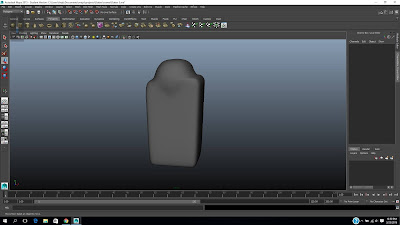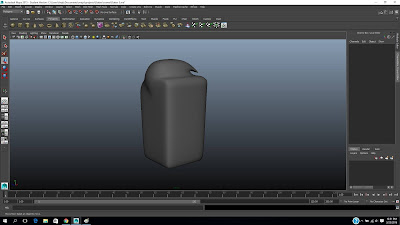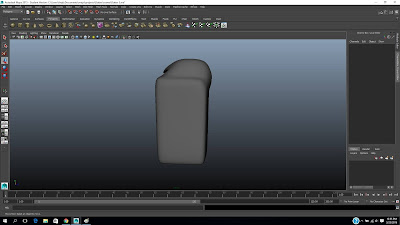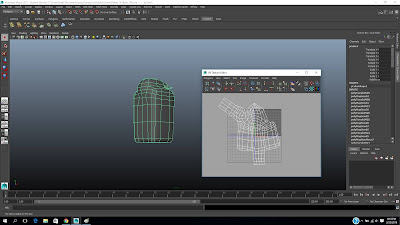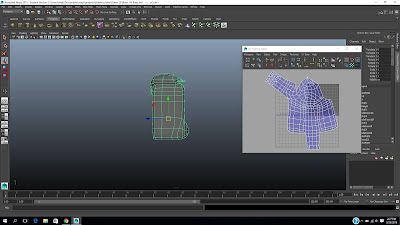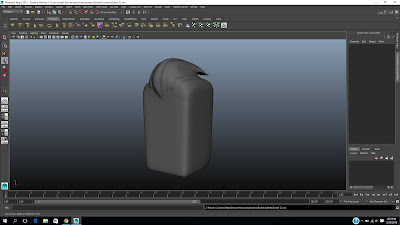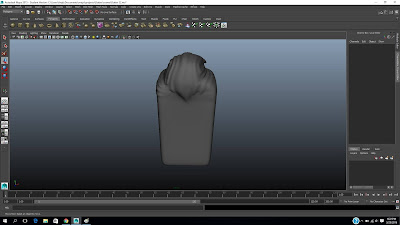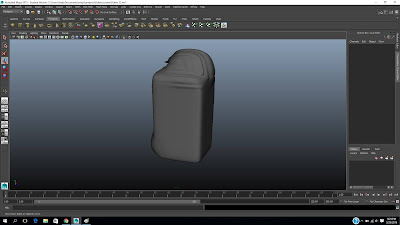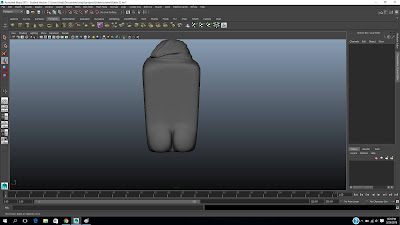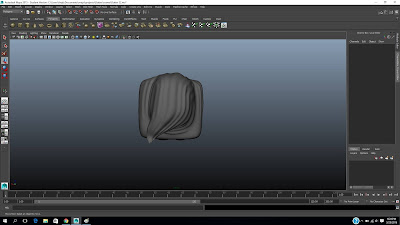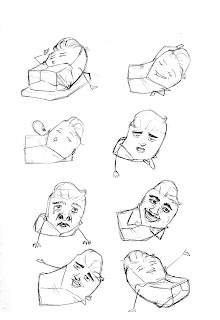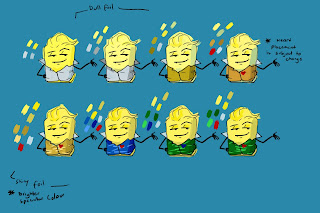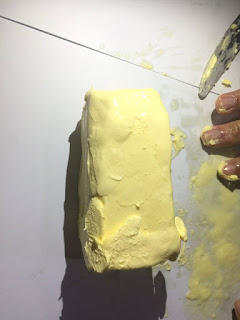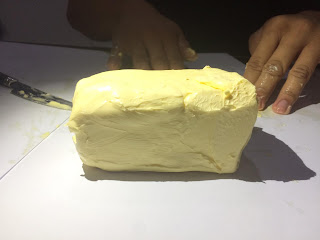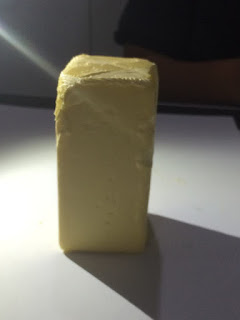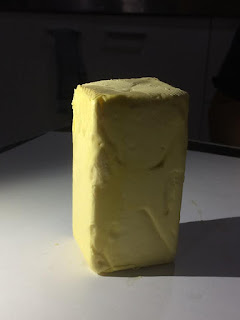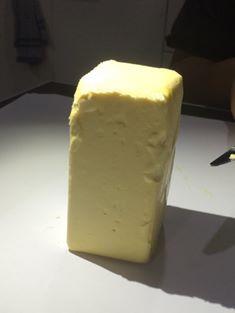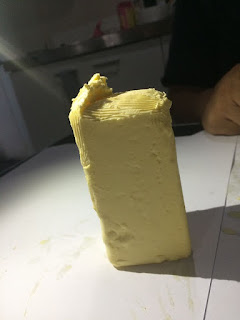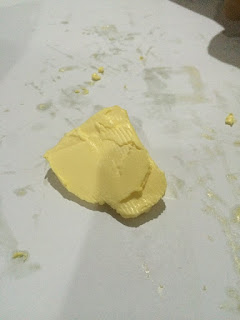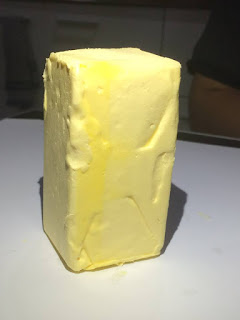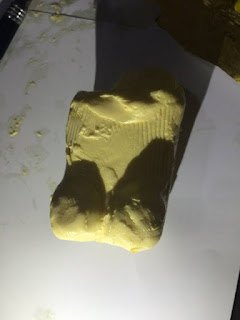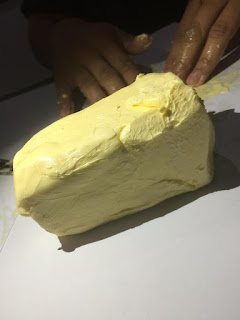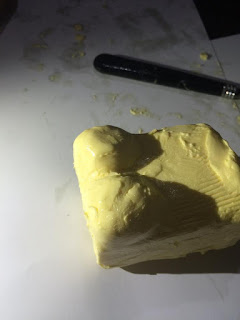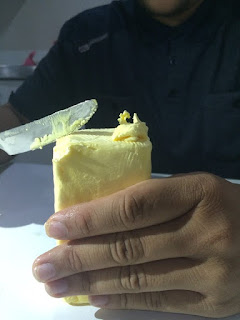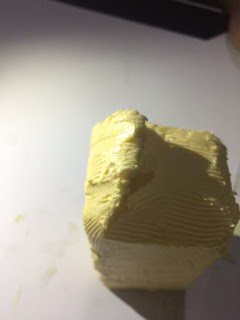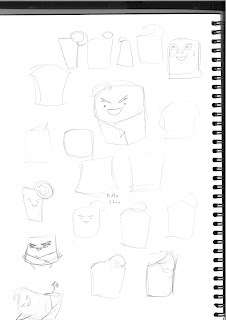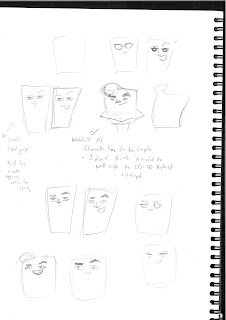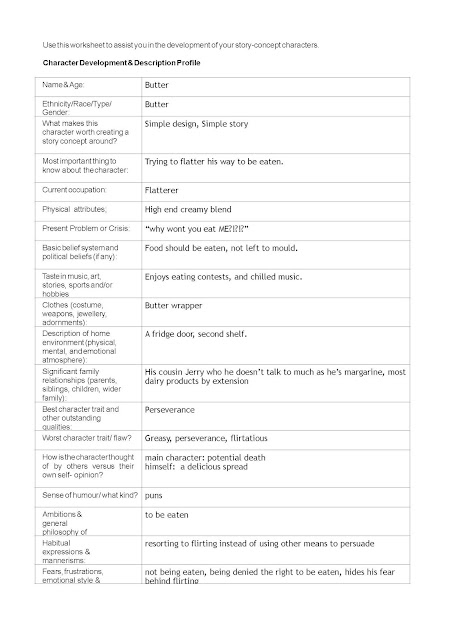Some screenshots of the butter while I'm modelling it in 3D. I did a basic UV map of it to make things easier then I just built up on that basic mapping.
Monday 28 March 2016
Thursday 24 March 2016
Interactive Narrative Week 5 Blog Entry 4
For this week I played Fahrenheit: Indigo Prophecy. The choices I made in the game resulted in branching narrative paths. The game has an embedded story with three possible outcomes at the very end. But when I played this game, one thing really struck me. At the very start of the game, right after the intro, I failed the game. I failed to escape the police man who went inside the men's room. I was then caught and the game ended there. Lucas then narrated that it was the end of his story. It really struck me because I found out that failing is one of the narrative paths I can take as a player. I can choose to end the story there and that's the story of Lucas. It made me feel that I have agency because I can end the story any way I want. I don't even have to reach the very end of the game. Of course this is only possible in certain situations but my actions do matter and have a big impact on the narrative of the game.
Choice situations can be either a-temporal or have a temporal dimension, which means that there might be a limited amount of time during which the options are available, or that – after a finite amount of time – not making any choices will produce an outcome that is different from the choice situation and that therefore constitutes a choice in itself. - Sebastian Domsch, Storyplaying (2013)
The game gives the player agency through choice situations. An example of this is when the screen splits into two. It prompts a situation wherein the player has to act quickly. The temporal dimension of this choice situation creates tension. The player can choose to act quickly or do nothing. As a player of the game, I am motivated to succeed so I chose to act quickly. Whether the player succeeds or not within the time limit determines the outcome. An example is when Lucas had to get out of the crime scene. I can either get caught and that's the end of Lucas' story or find a get away vehicle quickly and escape. After I succeeded at escaping the police, I felt like my actions prevented Lucas from getting caught and now I can learn more about the mystery.
References:
Domsch, S. (Author). (2013). Storyplay [Book]. Germany: Walter de Gruyter GmbH
Choice situations can be either a-temporal or have a temporal dimension, which means that there might be a limited amount of time during which the options are available, or that – after a finite amount of time – not making any choices will produce an outcome that is different from the choice situation and that therefore constitutes a choice in itself. - Sebastian Domsch, Storyplaying (2013)
The game gives the player agency through choice situations. An example of this is when the screen splits into two. It prompts a situation wherein the player has to act quickly. The temporal dimension of this choice situation creates tension. The player can choose to act quickly or do nothing. As a player of the game, I am motivated to succeed so I chose to act quickly. Whether the player succeeds or not within the time limit determines the outcome. An example is when Lucas had to get out of the crime scene. I can either get caught and that's the end of Lucas' story or find a get away vehicle quickly and escape. After I succeeded at escaping the police, I felt like my actions prevented Lucas from getting caught and now I can learn more about the mystery.
References:
Domsch, S. (Author). (2013). Storyplay [Book]. Germany: Walter de Gruyter GmbH
Quantic Dream (Developer). (2005). Fahrenheit: Indigo Prophecy [Video Game]. United States: Atari Inc.
Sunday 20 March 2016
Character Gestures and Colour Test
I did some body gesture drawings of Butter to see how his movements and poses work along with the faces we're planning to use.
I also did colour tests for Butter.
Thursday 17 March 2016
Interactive Narrative Week 4 Blog Entry 3
For this week I played The Wolf Among Us (2013). I really enjoyed it, it's a great game with a great story. I haven't finished it but I got the gist of the game. I'm really keen to finish it. Morality is in the core of the game. It influenced the choices I made while playing the game. The game lets the player pick either a positive or negative moral choice e.g. diplomatic or aggressive approach to problems. The player's approach will determine the course of the narrative and how the NPC would interact with the main character. (They remember things that you have done e.g. maiming Gren) Taking a certain path would mean that I would miss out something which is evident in the Book of Fables and Player Choices from the Extras e.g. Save Prince Lawrence.
The game presents moral dilemmas that the player has to face. It works because the characters are so relatable to real life that you feel empathy and sympathy towards them. But it presents you with an ethical dilemma because Bigby is a sheriff. So even though you feel sorry for other characters, it's still his job to obey and enforce the law. He is after all a sheriff, not a charity worker. For example, in the early phase of the game, Mr. Toad has run out of glamour and I have to tell him to buy some because it's the law. I chose not to aggressively force him but rather just remind him that it's the law. I did this because I felt empathy for the condition Mr. Toad is living in and he does have a family to support. I reckon it's part of Bigby's job to understand people because he has to keep the peace in Fabletown.
Roleplay also affects the decisions the player has to make. The context of the character provides a frame for the actions that the player has to take but it's still up to the player to whether follow that or deviate from it. My actions had consequences that affect how other characters would view Bigby as the protector of the town e.g. violence would make them doubt Bigby's role as the town's protector.
As has been shown, type two choices are created by the desire to prevent the state of the gameworld from becoming worse – to ensure the safety and continued existence of the player character, and possibly to prevent the destruction of the gameworld . Type one choices, on the other hand, are motivated by the desire to ameliorate the state of the gameworld. - Sebastian Domsch, Storyplaying (2013)
One of the biggest decisions I had to make was to either burn the tree or not. I'm quite embarrassed to say that I froze. I froze because I couldn't decide whether to do my job and burn the tree or keep a rare relic of the old world. I couldn't decide to condemn a criminal act and in a way add to the people's struggles or leave it and let more criminal activity spread. I froze and did nothing and that was the decision Bigby made. It was really difficult to choose and I made a morally gray decision. I chose to ignore this crime so that other people can cope but I also let crime spread. The action I made isn't clearly good or evil, it has some good and has some bad too. But it's a compromise that I had to do. From this example, in a way I wanted to make the people's lives better by turning a blind eye because it hurts for me to see them struggle in a world that they were forced to live in. The game is full of these situations wherein the player has to compromise.
References:
Domsch, S. (Author). (2013). Storyplay [Book]. Germany: Walter de Gruyter GmbH
Telltale Games (Developer). (2013). The Wolf Among Us [Video Game]. United States: Telltale Games
The game presents moral dilemmas that the player has to face. It works because the characters are so relatable to real life that you feel empathy and sympathy towards them. But it presents you with an ethical dilemma because Bigby is a sheriff. So even though you feel sorry for other characters, it's still his job to obey and enforce the law. He is after all a sheriff, not a charity worker. For example, in the early phase of the game, Mr. Toad has run out of glamour and I have to tell him to buy some because it's the law. I chose not to aggressively force him but rather just remind him that it's the law. I did this because I felt empathy for the condition Mr. Toad is living in and he does have a family to support. I reckon it's part of Bigby's job to understand people because he has to keep the peace in Fabletown.
Roleplay also affects the decisions the player has to make. The context of the character provides a frame for the actions that the player has to take but it's still up to the player to whether follow that or deviate from it. My actions had consequences that affect how other characters would view Bigby as the protector of the town e.g. violence would make them doubt Bigby's role as the town's protector.
As has been shown, type two choices are created by the desire to prevent the state of the gameworld from becoming worse – to ensure the safety and continued existence of the player character, and possibly to prevent the destruction of the gameworld . Type one choices, on the other hand, are motivated by the desire to ameliorate the state of the gameworld. - Sebastian Domsch, Storyplaying (2013)
One of the biggest decisions I had to make was to either burn the tree or not. I'm quite embarrassed to say that I froze. I froze because I couldn't decide whether to do my job and burn the tree or keep a rare relic of the old world. I couldn't decide to condemn a criminal act and in a way add to the people's struggles or leave it and let more criminal activity spread. I froze and did nothing and that was the decision Bigby made. It was really difficult to choose and I made a morally gray decision. I chose to ignore this crime so that other people can cope but I also let crime spread. The action I made isn't clearly good or evil, it has some good and has some bad too. But it's a compromise that I had to do. From this example, in a way I wanted to make the people's lives better by turning a blind eye because it hurts for me to see them struggle in a world that they were forced to live in. The game is full of these situations wherein the player has to compromise.
References:
Domsch, S. (Author). (2013). Storyplay [Book]. Germany: Walter de Gruyter GmbH
Telltale Games (Developer). (2013). The Wolf Among Us [Video Game]. United States: Telltale Games
Wednesday 16 March 2016
Character Development- Wrapper Rsearch



I'm doing research for the butter wrapper for our character. I'm doing this because I'm the head of 3D and this is going to help us when it comes to modelling and texturing the character. The possible materials we're looking for are butter paper or aluminum foil. But we're currently leaning towards the aluminum foil. We think it would work better because it can actually be bent into a certain shape ( a wrapped towel or a bathrobe for this instance) and it looks shiny which suits our greasy character.
Feedback: Dane and Keat suggested that we should look at high collar fashion used by Elvis Presley and John Travolta. We could look at whole disco scene of Saturday Night Fever (1977).
Monday 14 March 2016
Thursday 10 March 2016
Environment Research
For environment research, I looked at stills from comedy movies in order to see the shots they use, the lighting they use and the colour palette.


These are stills from Despicable Me (2010). The people who made this film used bright, vibrant colours to reflect the light and quirky tone of the genre. The environment is also well lit to match the light tone and the vibrant, quirky world of this animated film.


In Ratatouille (2007), they also used vibrant colours. They used saturated colours to make it look lively. And the colours intensify in key action moments such as the scene from the restaurant kitchen. We could use the fridge light to highlight the butter character to add a dramatic effect to his introduction.


These stills from the M&M ads use the same principle but it's also a good example of mixing 3D and live action.

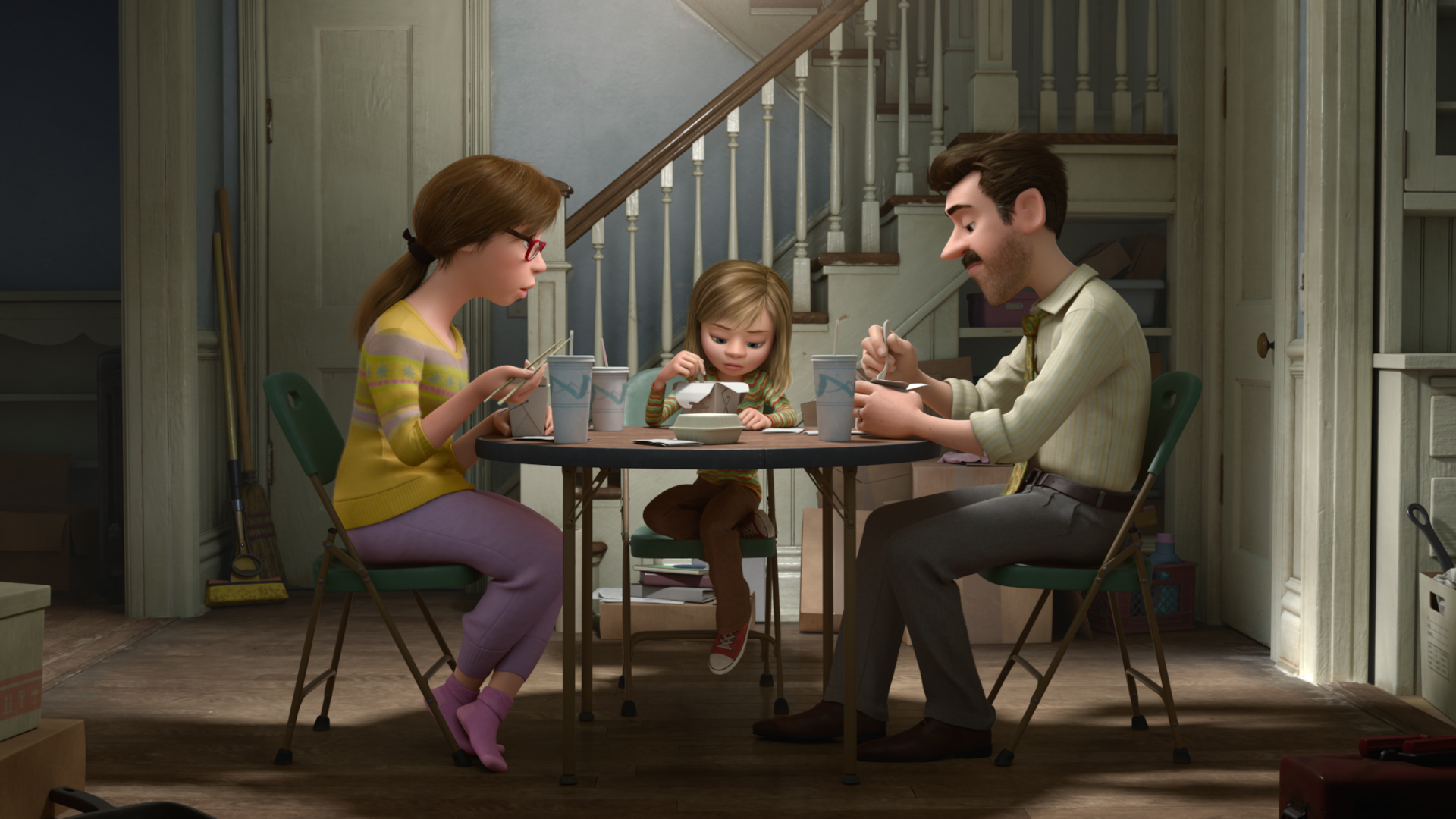
In the film Inside Out (2015) Lighting can be used to suggest a change in mood
We could use this when the fridge closes after the butter gets rejected. It fades to black to reflect the pain of rejection.
We went to the set yesterday (Michelle Z and Mikayla's apartment). It's not a well lit place so we'll have to use some artificial lighting to light up the place. This could be an advantage because we could determine what colour the light will be to match a certain colour palette.


These are stills from Despicable Me (2010). The people who made this film used bright, vibrant colours to reflect the light and quirky tone of the genre. The environment is also well lit to match the light tone and the vibrant, quirky world of this animated film.


In Ratatouille (2007), they also used vibrant colours. They used saturated colours to make it look lively. And the colours intensify in key action moments such as the scene from the restaurant kitchen. We could use the fridge light to highlight the butter character to add a dramatic effect to his introduction.


These stills from the M&M ads use the same principle but it's also a good example of mixing 3D and live action.


In the film Inside Out (2015) Lighting can be used to suggest a change in mood
We could use this when the fridge closes after the butter gets rejected. It fades to black to reflect the pain of rejection.
We went to the set yesterday (Michelle Z and Mikayla's apartment). It's not a well lit place so we'll have to use some artificial lighting to light up the place. This could be an advantage because we could determine what colour the light will be to match a certain colour palette.
Wednesday 9 March 2016
More Character Concept Sketches
I drew some silhouettes to try out different ideas, just to push it and experiment with it. We are dealing with a block of butter here and it is kind of limiting but I just tried out combining different shapes for the character. I experimented with shape language for the character. It can be kind of a cutesy character so I integrated a roundness to the block of butter. He's a really greasy dude and so I used curved yet pointed shapes for the "hair-do" to make him look kind of despicable. I also experimented with scale. I tried out different builds for the block. I made slender ones, buff ones, short ones and stout ones. I did these sketches while discussing ideas about the character with my teammates.
Mainly I just gave my teammates possible silhouettes and shapes to work with just to push the design of the character. They're the ones who are going to develop it. Now that Mikayla and Michelle Z. have finished the final script (Although there might be changes in the future) and have developed ideas for the storyboard, I am now working with them to research about the layout of the environment. What items to put, the kind of lighting we're going to use and how that relates to our chosen genre.
This is the Character Profile that we're working with.
Mainly I just gave my teammates possible silhouettes and shapes to work with just to push the design of the character. They're the ones who are going to develop it. Now that Mikayla and Michelle Z. have finished the final script (Although there might be changes in the future) and have developed ideas for the storyboard, I am now working with them to research about the layout of the environment. What items to put, the kind of lighting we're going to use and how that relates to our chosen genre.
Subscribe to:
Posts (Atom)
